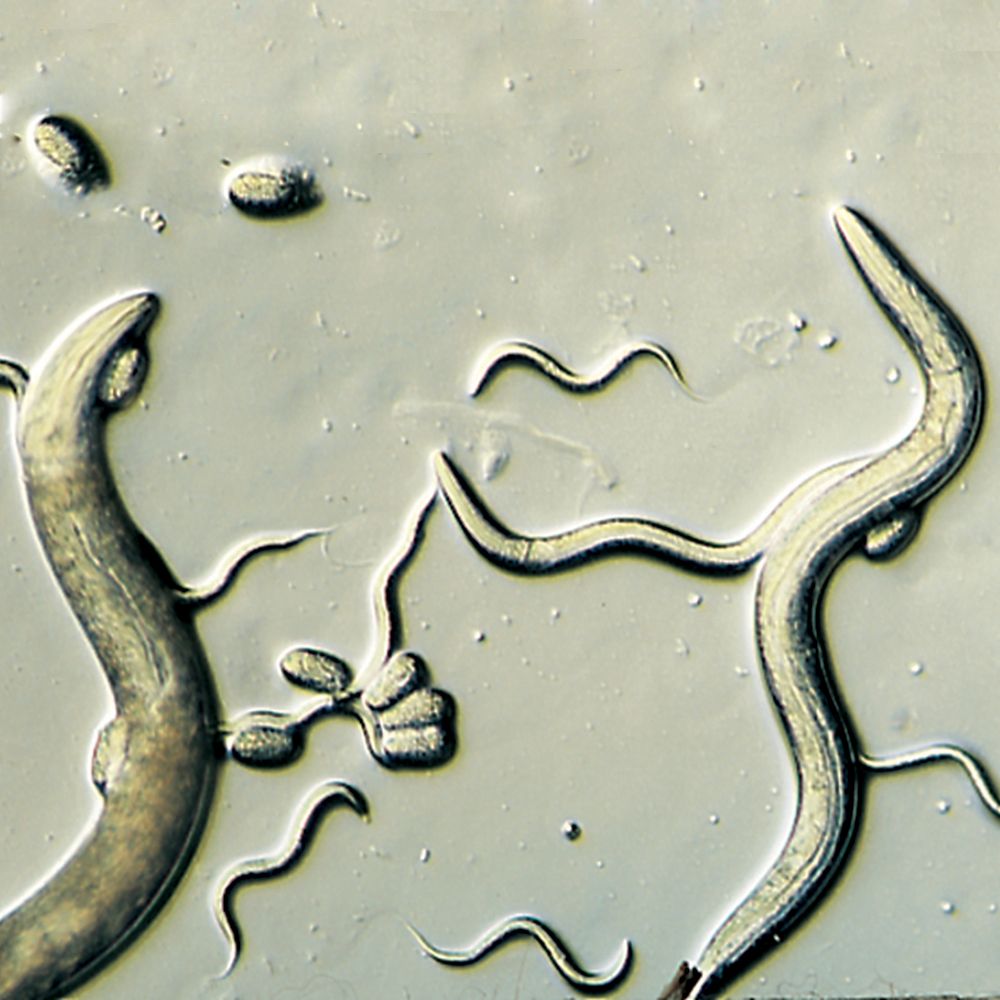My Cart
Your Shopping Cart is currently empty. Use Quick Order or Search to quickly add items to your order!

Caenorhabditis elegans is a nonparasitic soil nematode that has served as a model organism for research scientists since the 1960s. C. elegans feeds on soil-dwelling bacteria in the wild. Research strains of C. elegans are maintained under laboratory conditions using feeder strains of Escherichia coli. Working with model organisms provides an important skill set for any student of the life sciences. This lab introduces students to the organism and provides them with the tools necessary to perform simple experiments using C. elegans.
Caenorhabditis elegans N2 (wild-type strain) plate culture (173500)
Escherichia coli (OP50) plate culture (155073) or E. coli K–12 plate culture (155067)
Bacillus megaterium broth culture (154900) or any other microorganism such as Bacillus subtilis (154921)
ethanol (861281) and burner (706709)
sterile disposable petri plates (100 × 15 mm) (741250)
metal inoculating loop (703060) or sterile cotton swabs (to spread bacteria cultures onto plates)
permanent marker
microscope (590960) (most work can be done with a dissecting scope at 30×)
Ensure that students understand and adhere to safe laboratory practices when performing any activity in the classroom or lab. Demonstrate the protocol for correctly using instruments and materials necessary to complete the investigations, and emphasize the importance of proper usage. Use personal protective equipment such as safety glasses or goggles, gloves, and aprons when appropriate. Model proper laboratory safety practices for your students and require them to adhere to all laboratory safety rules.
Caenorhabditis elegans is not parasitic or pathogenic. Even so, be sure to follow your district’s guidelines so you are prepared if a student ingests a culture. After completion of the activities, dispose of the remaining worm and bacteria cultures according to district guidelines and procedures.
Students can work individually or in pairs.
Preparation of Nematode Growth Medium Plates
C. elegans is maintained in the lab on a special medium called nematode growth agar. The nematode growth agar must be aseptically poured into petri plates. We suggest using 100-mm plates to grow large quantities of worms for study and experimentation.
Preparation of Bacterial Food Source
Although C. elegans can be maintained without a bacterial food source, the animals will grow and reproduce very slowly. C. elegans is traditionally grown in the laboratory using E. coli strain OP50, as it supports the fastest growth and maturation of worm colonies. However, any strain of bacteria can be used for feeding. The worms will hunt for the highest quality food available in their environment and leave behind hard-to-eat bacteria.
Sample Data Table 1 for Section 1 (E. coli OP50)
| Time | Instances of Dwelling Behavior | Instances of Roaming Behavior | Notes |
| 0 | 15 | 3 | |
| 5 | 12 | 1 | |
| 10 | 21 | 6 | |
| 15 | 14 | 3 |
Sample Data Table 1 for Section 2 (B. megaterium)
| Time | Instances of Dwelling Behavior | Instances of Roaming Behavior | Notes |
| 0 | 3 | 10 | |
| 5 | 4 | 14 | |
| 10 | 7 | 6 | |
| 15 | 2 | 7 |
Sample Data Table 1 for Section 3 (Worms)
| Time | Instances of Dwelling Behavior | Instances of Roaming Behavior | Notes |
| 0 | 1 | 3 | |
| 5 | 1 | 3 | |
| 10 | 0 | 4 | |
| 15 | 1 | 3 |
Sample Data Table 2*
| Time (in hours) | Number of Worms in Section 1 | Number of Worms in Section 2 | Number of Worms in Section 3 |
| 24 | 40 | 12 | 4 |
| 48 | 48 | 6 | 2 |
| 72 | 54 | 2 | 0 |
*Note to instructor: Assign student time points as appropriate for your class meeting schedule. A trend can be observed after 72 hours of incubation. Your results may vary from what is presented here.